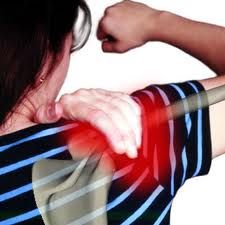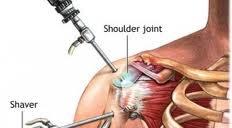The shoulder joint is the joint with greatest range of motion of any joint. Because of this wide range of motion, one is able to place a hand in many advantageous positions. But the wide range of motion is at the expense of stability. A lack of stability results in a joint that is loose with a tendency to dislocate (come out of its socket). The joint and the tendons about the joint are subjected to considerable wear and tear leading to degeneration of the joint surface giving rise to arthritis and tears in the supporting tendons (the tough fibrous tissue through which a muscle attaches to bone)
Depending on the nature of the problem, nonsurgical methods of treatment often are recommended before surgery. However, in some instances, delaying the surgical repair of a shoulder can increase the likelihood that the problem will be more difficult to treat later. Early, correct diagnosis and treatment of shoulder problems can make a significant difference in the long run.
Types of Shoulder Surgery
Shoulder surgery can be used for a number of treatments :• Arthroscopic Acromioplasty : This is an arthroscopic procedure to widen the space between the upper arm and the shoulder blade so that the rotator cuff tendons do not get stuck between them. Arthroscopy with shoulder instability – In case of dislocation of the shoulder, it is normal to have an arthroscopy. It is often possible to repair damage to the shoulder but sometimes a separate operation is needed. • Rotator Cuff Repair : Arthroscopic repair of the shoulder tendons. The goal of these procedures is to minimize the pain, restore strength and functionality. • Total Shoulder Replacement : Shoulder arthroplasty – With loss of cartilage the patient will suffer severe shoulder arthritis. This will eventually make surgical treatment is necessary. |
Different Types of Shoulder Surgery Procedures at World Class Hospitals in India
The procedure and technique used in shoulder surgery varies depending on the specific surgery. Shoulder surgery is generally performed using one of the following approaches:
• Minimally Invasive Surgery is performed by inserting special instruments and an arthroscope through small incisions in your shoulder. This approach is also known as arthroscopy. An arthroscope is a thin, lighted instrument with a small camera. The camera transmits pictures of the inside of your joints to a video screen viewed by your surgeon as he or she performs the surgery. Minimally invasive surgery generally involves a faster recovery, less pain, and less risk of complications than open surgery. This is because it causes less damage to tissues and organs. Your surgeonwill make small incisions instead of a larger one used in open surgery. He or she can then thread surgical tools around structures and organs instead of cutting through or displacing them as in open surgery.
• Mini-Open Surgery uses newer technology and combines minimally invasive arthroscopic techniques with a smaller open procedure. The incision is one to two inches long, which is smaller than a standard open surgery incision. This technique may allow some surgeons to make more extensive repairs than are possible with minimally invasive surgery. However, it causes less damage than traditional open surgery because your muscles remain attached during the surgery.
• Open Surgery : Open surgery may be necessary and, in some cases, may be associated with better results than arthroscopy. Open surgery often can be done through small incisions of just a few inches. Recovery and rehabilitation is related to the type of surgery performed inside the shoulder, rather than whether there was an arthroscopic or open surgical procedure.
To know more about Shoulder surgery in India please visit this link: https://safemedtrip.com/medical-services/orthopedic-surgeries-treatment-in-india/shoulder-surgery-in-india.html

 Click to WhatsApp
Click to WhatsApp +91-9899993637
+91-9899993637





